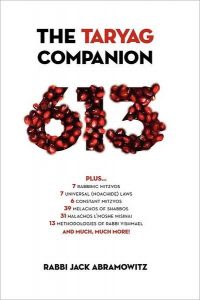3. Filet Mignon: The prohibition against eating the sciatic nerve
Therefore, the children of Israel do not eat the sciatic nerve of the hip socket until this very day, because Jacob was struck on the sciatic nerve of his hip socket. (Genesis 32:33)
This mitzvah, the third and final in the Book of Genesis, is also the only negative mitzvah in the Book. It occurs in parshas Vayishlach, following Yaakov’s wrestling match with an angel. Rather than coming out and saying, “Thou shalt not,” the commandment is woven into the story.
In Genesis chapter 32, while anxiously awaiting an encounter with his estranged brother Eisav (Esau), Yaakov wrestles with Eisav’s “guardian angel,” whom he defeats. The angel blesses him and grants him the name Israel (a move later ratified by God). However, Yaakov was wounded in the struggle. Verse 33 tells us, “therefore the children of Israel do not eat the sinew of the thigh to this very day.” The Talmud in Chulin 101b explains that despite its narrative nature, this mitzvah was commanded at Sinai like the others. It is merely recorded at this point because of its thematic relevance to the story. (A support of this idea is the use of the term “the children of Israel,” which would not be used until the time of the Egyptian slavery.)
The symbolism of this mitzvah is that the Jews will endure suffering at the hands of other nations – including our brother Eisav – but that we will always persevere and never disappear. This message is driven home by attaching it to a mitzvah.
The sciatic nerve – gid hanasheh in Hebrew - must be removed during a deveining process called nikkur in Hebrew (or treibering in Yiddish) that also removes certain forbidden fats and blood vessels. Due to its difficulty, removing the sciatic nerve is deemed not cost effective in some communities, with the result that the hindquarter may end up being sold to a non-kosher butcher shop.
This mitzvah is in effect in all times and in all places. It applies equally to men and to women. Details can be found in the seventh chapter of the Talmudic tractate of Chulin and in the Shulchan Aruch in Yoreh Deah 65. It is #183 of the 365 negative mitzvos in the Rambam’s Sefer HaMitzvos and #1 of the 194 negative mitzvos that can be fulfilled today as listed in the Chofetz Chaim’s Sefer HaMitzvos HaKatzar.
 |
The Taryag Companion - available now from OU Press! |
